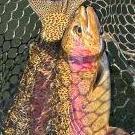Rivers
Subcategories
- 41
- articles
- 15
- articles
- 0
- articles
- 2
- articles
- 8
- articles
- 8
- articles
- 20
- articles
- 2
- articles
- 5
- articles
- 0
- articles
- 2
- articles
- 1
- article
- 2
- articles
- 5
- articles
- 14
- articles
- 0
- articles
- 4
- articles
- 1
- article
- 0
- articles
- 2
- articles
- 0
- articles
- 0
- articles
- 0
- articles

